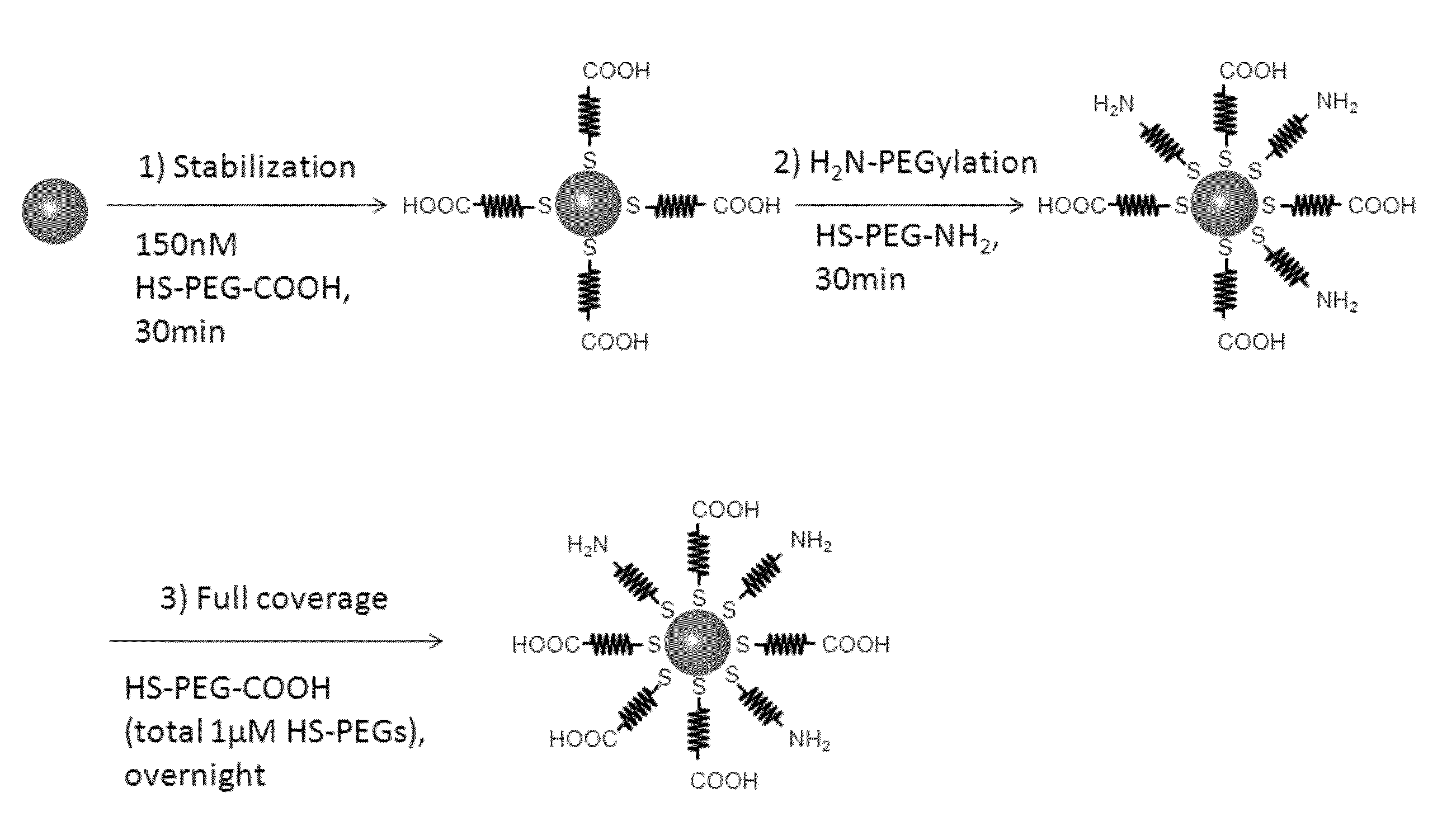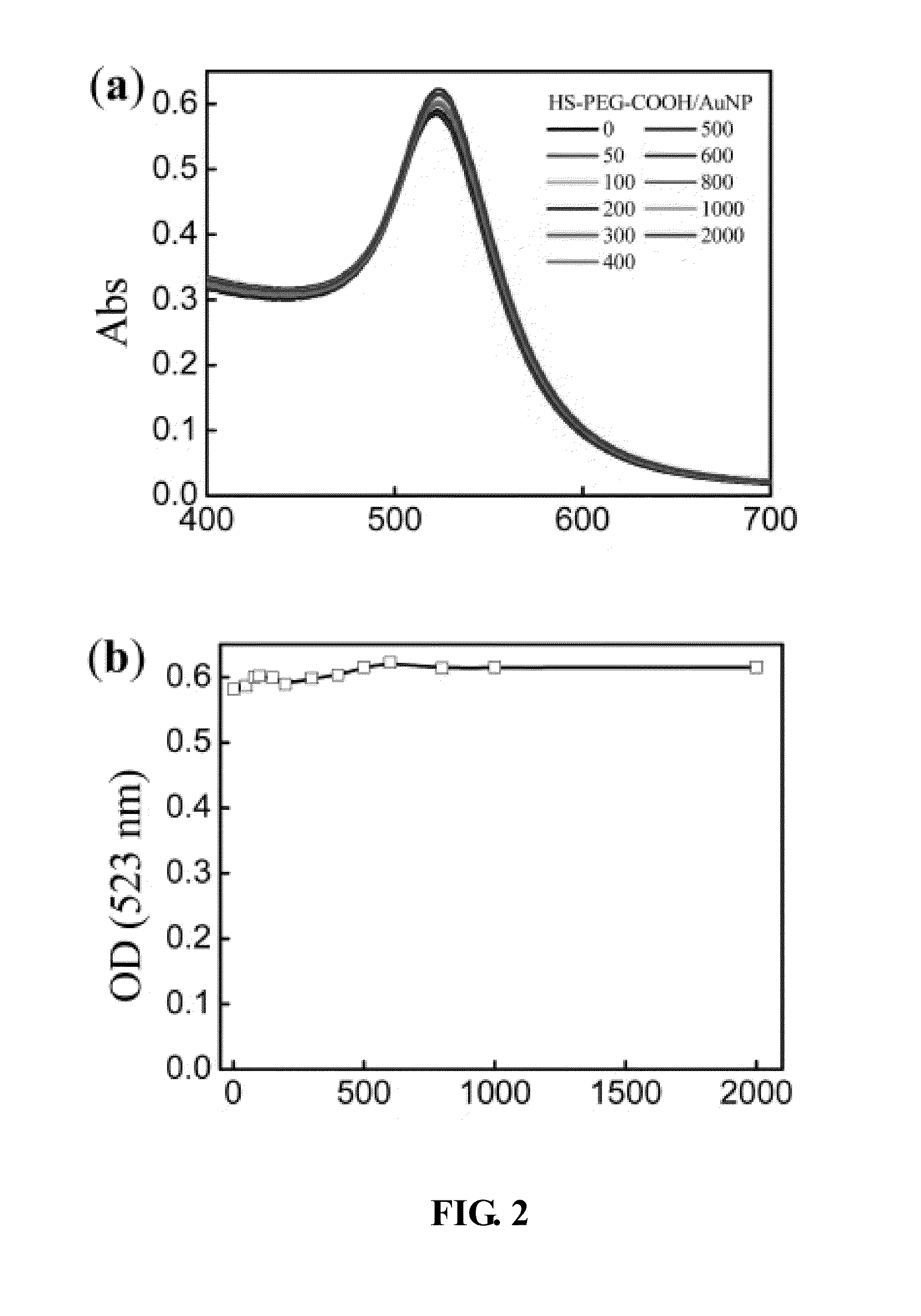Conjugated gold nanoparticles
a gold nanoparticle and conjugate technology, applied in the field of conjugate gold nanoparticles, can solve the problems of reducing the bioavailability of targeting agents, not easy to remove excess free ligands without inducing aggregation or leading to noticeable loss of gold nanoparticle conjugates, and unsatisfactory to have excess free peg molecules left in gold nanocolloids, etc., to maximize the colloidal stability of said colloidal gold nanoparticles
- Summary
- Abstract
- Description
- Claims
- Application Information
AI Technical Summary
Benefits of technology
Problems solved by technology
Method used
Image
Examples
Embodiment Construction
[0042]Gold nanocolloids have attracted strong interest from scientists for over a century and are now being heavily investigated for their potential use in a wide variety of medical and biological applications. For example, potential uses include surface-enhanced spectroscopy, biological labeling and detection, gene-regulation, and diagnostic or therapeutic agents for treatment of cancer in humans. Their versatility in a broad range of applications stems from their unique physical, chemical, and surface properties, such as: (i) size- and shape-dependent strong optical extinction and scattering at visible and near infrared (NIR) wavelengths due to a localized surface plasmon resonance of their free electrons upon excitation by an electromagnetic field; (ii) large surface areas for conjugation to functional ligands; and (iii) little or no long-term toxicity or other adverse effects in vivo allowing their high acceptance level in living systems.
[0043]These new physical, chemical, and s...
PUM
| Property | Measurement | Unit |
|---|---|---|
| molar ratio | aaaaa | aaaaa |
| molar ratio | aaaaa | aaaaa |
| size | aaaaa | aaaaa |
Abstract
Description
Claims
Application Information
 Login to View More
Login to View More - R&D
- Intellectual Property
- Life Sciences
- Materials
- Tech Scout
- Unparalleled Data Quality
- Higher Quality Content
- 60% Fewer Hallucinations
Browse by: Latest US Patents, China's latest patents, Technical Efficacy Thesaurus, Application Domain, Technology Topic, Popular Technical Reports.
© 2025 PatSnap. All rights reserved.Legal|Privacy policy|Modern Slavery Act Transparency Statement|Sitemap|About US| Contact US: help@patsnap.com



